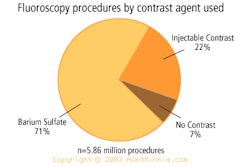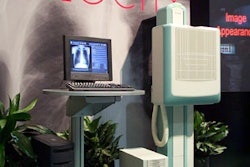(Radiology Review) A recent study out of Philipps-Universität in Marburg evaluated intraoperative spinal digital subtraction angiography (ISDSA). According to the German neurosurgeons, "ISDA is safe and effective, especially in surgery for complex vascular and recurrent malformations."
They outlined three reasons for the study: to share their experience, to describe the technique, and to explain patient positioning and sheath positioning. Thirty patients had surgical or endovascular treatment of spinal vascular lesions during a 4.5-year period. Their study reviews five consecutive cases requiring ISDSA that had intramedullary AVM (N=2), complex spinal AVM (N=1), and spinal perimedullary AV fistula (N=2).
An 18-gauge needle followed by a 5-French sheath was introduced into the common femoral artery prior to spinal surgery. During surgery, a 5-French spinal catheter was inserted and Iopamidol was used to opacify the lumbar and intercostal arteries. A portable DSA system was used to obtain and store representative images, and this lengthened the overall surgical procedure by an average of 45 minutes.
"In all five patients, a transfemoral embolization procedure was performed before the patient underwent microsurgery," they said. "Favorable indications for the application of ISDSA are complex spinal vascular malformations or its use in rest nidus detection and recurrent spinal vascular malformation." It’s use should improve surgical safety and long-term results, they wrote.
The authors concluded that "vascular neurosurgeons should not hesitate to accept moderate additional expense and a reasonable prolongation of the surgical procedure because the benefits to the patient outweigh these shortcomings."
Intraoperative spinal digital subtraction angiography: technique and resultsBenes, L. et al.
Klinik für Neurochirurgie, Philipps-Universität Marburg, Marburg, Germany
Neurosurgery 2003 March; 52:603-609
By Radiology Review
August 1, 2003
Copyright © 2003 AuntMinnie.com



















